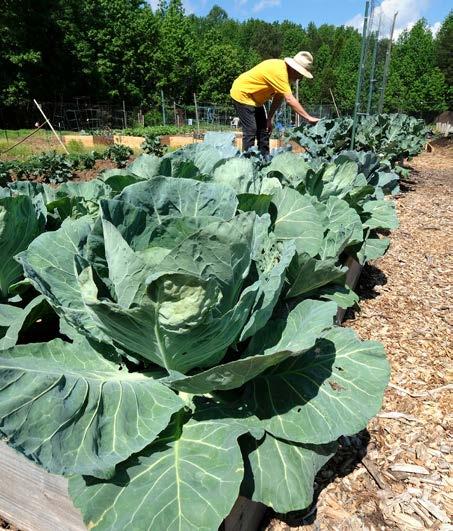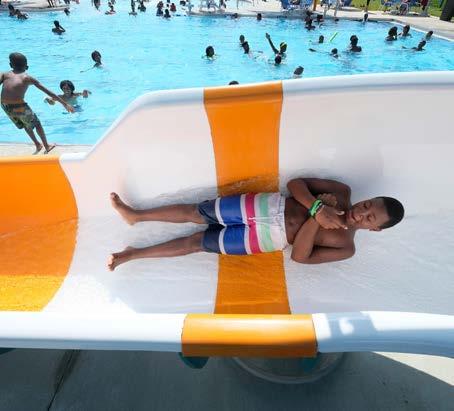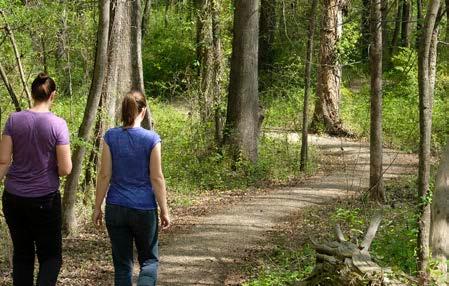
3 minute read
The Starting Line
Why do we need a Playbook?
Meck Playbook comes at a critical time for Mecklenburg County. Charlotte is the fifth fastest growing city in the United States and is driving population increases and development across the region. At the same time, demographics are shifting, recreational trends are changing, natural systems are feeling pressure, and funding strategies are requiring greater creativity and commitment. Behind the scenes, parks, greenways, and nature preserves serve as areas of watershed protection, water quality enhancement, and open space protection for future generations. During this planning process, the COVID-19 pandemic has also reminded everyone of the essential value of getting outdoors, experiencing nature, and pursuing recreation activities as part of their daily lives. This is an ideal – and necessary – moment to reimagine what open space services will be in the future for Mecklenburg County residents.
Advertisement
Meck Playbook is Mecklenburg County’s new Comprehensive Park and Recreation Master Plan. The plan will be referred to as Meck Playbook throughout this document. The most recent master plan update was completed in 2015, to guide the development and enhancement of Mecklenburg’s extensive system while creating the foundation for individual park plans and capital projects. It establishes four guiding principles, each with a clear set of goals, strategies, and recommendations for Mecklenburg County’s recreation facilities, greenways, nature preserves, recreational programming, and land acquisition for the next ten years. Meck Playbook was created through a collaborative process with department staff, representatives from other towns and jurisdictions, park and recreation partners, the Park and Recreation Commission and its Advisory Councils, and other stakeholders. Most importantly, it was created with extensive engagement and feedback from Mecklenburg County residents. Today, the system includes over 230 park and recreation facilities, including parks, nature preserves, stadiums, camping areas, golf courses, greenways, multi-use greenway trails, and nature preserve land. Investing in park and recreational facilities has multi-faceted benefits. It creates destinations, by drawing in local and non local visitors to generate new spending. It fuels the economy. In 2018, Mecklenburg County led the state in domestic travelers expenditures, with visitors spending nearly $5.7 billion. This accounts for 77% of the total $7.4 billion spent in the Charlotte MSA1. This was a 5.6% increase from the previous year. As of 2018, one in nine jobs in the Charlotte region was in the hospitality sector.2 Parks, open spaces, and greenway trails are undoubtedly a part of these attractions. Investment in the system also ties back directly to the four main principles of the Livable Meck Plan: healthy, affordable, secure, and accessible.3 The system protects and expands green space and recreational amenities. It supports actions like 2019’s “Breathing Room” initiative. This initiative was taken on by Mecklenburg County’s Air Quality Division-Land Use & Environmental Services Agency (LUESA) to reduce ozone pollution and improve air
quality. The system protects natural systems by reducing runoff and cleaning the air. Greenway trails, parks, and open space are active attributes in stormwater management and natural disaster mitigation. LUSEA’s Storm Water Program, in particular, has greatly assisted the expansion of the greenway system. It has linked the needs for stormwater mitigation with greenway development initiatives. LUSEA’s 2017 proposal to rezone sections of the Mallard Creek Greenway is an example. It requested a 50-foot stormwater easement on the parcel on the FEMA stream, making the greenway multitask to solve multiple ecological needs. Finally, the system strives to connect neighborhoods through pedestrian friendly pathways, support adoption of non-vehicular transportation methods, and champion integrating public transportation and open space systems. These actions are all strategies of the Livable Meck Plan.
These benefits to tourism, public health, natural systems, and affordability attract businesses. The 2019 Livable Meck Progress Report highlights this interplay of quality of life and economics through the example of Trane Manufacturing. This Charlotte based plant has hosted many week long summer camps focused on energy and engineering education, specifically for young girls.
1.1 Expanded community gardens promote healthy eating habits county-wide. 1.2 Youth cooling off at Double Oaks Pool.












